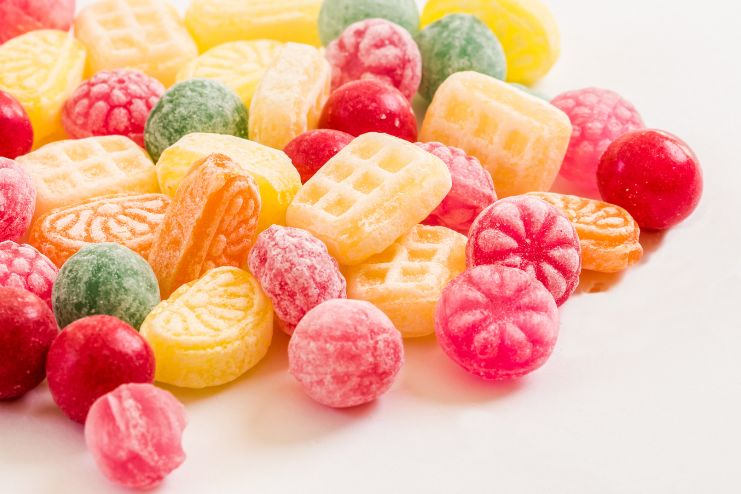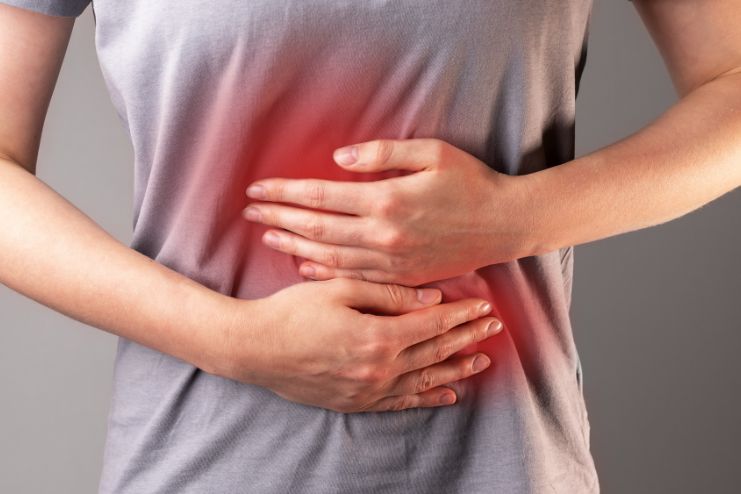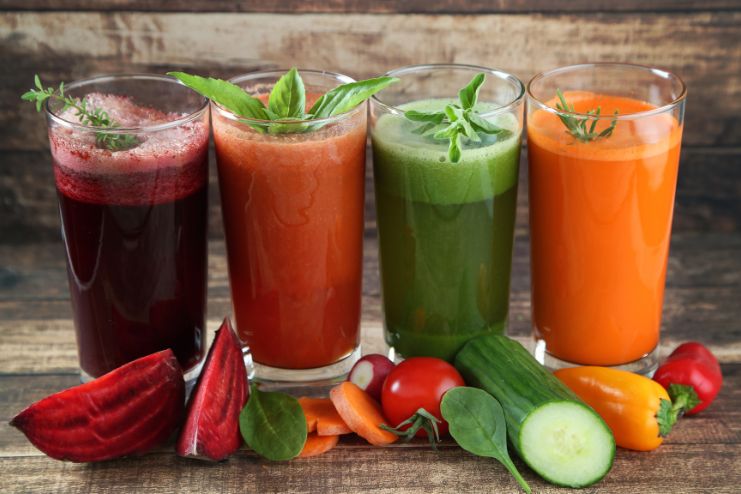Affiliate Disclaimer
Some links in this article are affiliate links. We may earn a small commission if you make a purchase through these links, at no extra cost to you. We only recommend products we find useful to our readersEver wondered what gives candy that bright, irresistible color? One of the key ingredients responsible for that glossy, white finish in sweets, chewing gum, and even baked goods is Titanium Dioxide (TiO₂). This widely used food additive enhances color vibrancy, making treats more appealing to the eye.
However, with growing concerns about food safety, parents and health experts are starting to take a closer look at this common ingredient.
Is titanium dioxide safe for children? Should we be concerned about its long-term effects on health? And why has it been banned in some countries but allowed in others?
It’s important to stay informed and understand why titanium dioxide has sparked worldwide debate. So, let’s dive into the facts and examine what the concerns are all about.
What Is Titanium Dioxide?

Titanium Dioxide (TiO₂) is a naturally occurring white mineral commonly used across various industries, including food, cosmetics, and sunscreens. In the food world, it acts as a coloring and whitening agent, often found in:
- Candies and chewing gum
- Baked goods and frostings
- Processed snacks and powdered drinks
There are two primary forms of TiO₂: food-grade and industrial-grade. The food-grade version is highly purified and safe for consumption, while the industrial-grade version is used in paints, coatings, and plastics. The key debate is whether food-grade TiO₂ poses any health risks.
Known as titania or Pigment White 6, it’s also recognized by its chemical formula TiO₂. Found naturally in minerals like rutile and anatase, titanium dioxide remains a topic of interest.
Potential Health Concerns of Titanium Dioxide in Candy

Titanium Dioxide (TiO₂) has long been used as a food additive, especially in candies. In recent years, its safety has come under scrutiny due to various health concerns. Let’s look at why!
Digestive & Absorption Risks
One of the key concerns with TiO₂ is that it may not be fully absorbed by the body. Studies suggest that the substance can accumulate in tissues, particularly in the digestive system. This has led scientists to raise alarms about its potential effects on gut health, including:
- Disrupting the gut microbiome: It may alter the balance of beneficial bacteria, leading to digestive issues.
- Weakening the intestinal barrier: Titanium Dioxide could compromise the integrity of the gut lining, making it more permeable and vulnerable to harmful substances.
- Interfering with nutrient absorption: There is a concern that TiO₂ may hinder the body’s ability to absorb essential nutrients, which can lead to long-term health effects.
Potential Toxicity & The Nanoparticle Debate
The real controversy lies in the nanoparticle content of some food-grade Titanium Dioxide. Nanoparticles are extremely small and can cross biological barriers, which has raised concerns about their safety. Research suggests that these ultra-small particles could potentially:
- Cause cell damage and oxidative stress: Nanoparticles can generate reactive oxygen species, which may damage cells and tissues.
- Alter DNA and cause genetic mutations: Some studies suggest that nanoparticles may induce DNA strand breaks and chromosomal damage, raising concerns about long-term genetic effects.
- Trigger inflammatory responses: The body’s immune system may react to these particles, leading to inflammation that could cause various health issues over time.
Though more research is needed, these findings have sparked concern among health experts worldwide.
Nano-Sized TiO₂ & Organ Toxicity
Long-term exposure to nano-sized Titanium Dioxide is particularly concerning due to its potential to accumulate in organs and tissues. Studies have shown that:
- Agglomeration during digestion: Nanoparticles can clump together during the digestive process, increasing their potential toxicity.
- Cytotoxicity and organ effects: Prolonged exposure to nano-TiO₂ has been associated with increased cytotoxicity (cell damage) and negative effects on organs. In animal studies, a significant increase in organ toxicity was observed after exposure to nano-sized particles.
Cancer Concerns & Regulatory Scrutiny
The most alarming potential risk of Titanium Dioxide is its possible link to cancer. In 2022, the European Food Safety Authority (EFSA) declared TiO₂ unsafe as a food additive, citing potential long-term risks, including cancer development. This led to a ban on the additive across the European Union.
However, not all regulatory bodies agree. The U.S. Food and Drug Administration (FDA), for instance, still permits the use of Titanium Dioxide in food, stating that current exposure levels do not pose an immediate threat.
This regulatory split has left consumers caught in a debate, unsure of whether to trust the EU’s precautionary approach or the FDA’s more lenient stance.
- IARC Classification: The International Agency for Research on Cancer (IARC) has classified Titanium Dioxide as “possibly carcinogenic to humans” based on studies showing increased lung tumors in rats exposed to inhaled TiO₂.
- FDA’s Position: The FDA maintains that data from the National Toxicology Program (NTP) does not show any evidence of carcinogenicity and that current usage levels in food are considered safe.
Which Candies and Processed Foods Contain Titanium Dioxide?

Titanium Dioxide (TiO₂), commonly used for coloring and enhancing texture, can be found in a wide variety of candies and processed foods. While some brands have started reformulating their products in response to consumer concerns, it remains a prevalent ingredient.
Here’s a detailed breakdown of where you might encounter it:
Candies:
- Gummy Candies: Popular treats like Trolli Sour Bursting Crawlers, Sour Brite Crawlers, Sour Brite Octopus, and Sour Patch Kids Watermelon Soft & Chewy Candy often contain TiO₂.
- Hard-Shelled Candies: Brands like Skittles and Starburst use titanium dioxide, as reported by the Environmental Working Group (EWG).
- Peppermint Candies & Candy Canes: Brach’s Star Brites Peppermint Candy and some varieties of candy canes, such as Brach’s Wintergreen Candy Canes, may also contain TiO₂.
- Other Candies: Look for it in Brach’s Fall Festival Candy Corn, Nerds Rainbow Shelled Candy Corn, and Strawberry Puffs.
Processed Foods:
- Chewing Gum: Common brands like Dubble Bubble Gum Balls, Dentyne Ice Peppermint, and Stride Sugar-Free Spearmint Gum use TiO₂ for color and texture.
- Baked Goods & Snacks: You might find it in Little Debbie Fudge Rounds, Hostess Chocolate Cupcakes, and Hostess Powdered Donettes.
- Ice Cream & Dairy: Friendly’s Birthday Cake Ice Cream and various cheese products may also contain titanium dioxide.
- Snack Mixes: Some trail mixes, like Tops Classic Trail Mix and Publix Nut & Chocolate Trail Mix, list TiO₂ as an ingredient.
- Other Processed Foods: It’s not uncommon to find titanium dioxide in items like salad dressings, frozen pizzas, drink mixes, jello, and even some dairy products like cream and yogurt.
To avoid titanium dioxide, be sure to check ingredient labels, where it might appear as E171 (its European food code). Brands are increasingly moving away from using it, but it’s still worth being mindful of the foods that might contain this controversial additive.
Safer Alternatives to Titanium Dioxide in Candy

As concerns about Titanium Dioxide (TiO₂) rise, many companies are shifting to plant-based, clean-label alternatives that are not only safer but also provide natural color and added health benefits.
Here are some common natural color substitutes:
- Beet Juice: Offers vibrant red shades, perfect for replacing synthetic red dyes.
- Spirulina: This algae-based colorant provides beautiful blue-green hues.
- Turmeric & Annatto: Ideal for creating rich yellow and orange tones in candies.
These natural alternatives help ensure that candies maintain their visual appeal without compromising on health.
How Parents Can Make Healthier Choices for Kids
If you’re concerned about exposing your kids to Titanium Dioxide, here are some proactive steps you can take:
- Read Labels Carefully: Always check for “Titanium Dioxide” or its code E171 in ingredient lists.
- Choose Organic and Non-GMO Brands: Many organic-certified products avoid artificial additives, making them a safer option.
- Opt for Natural Sweets: Look for brands that use fruit and vegetable-based colors for their candies.
- Make Homemade Treats: By preparing sweets yourself and using whole, natural ingredients, you have full control over what goes into your family’s treats.
By being mindful of these choices, you can ensure healthier options for you and your kids while still enjoying colorful, tasty treats!
Conclusion
Titanium Dioxide (TiO₂) has long been a common additive in candies and processed foods, offering vibrant colors and smooth textures. However, growing concerns about its potential health risks—ranging from digestive issues and nanoparticle toxicity to possible links to cancer—have led to increased scrutiny.
While regulatory bodies like the FDA still deem it safe in small quantities, the European Union has banned its use due to potential long-term risks, leaving consumers caught between conflicting opinions.
Fortunately, safer, plant-based alternatives such as beet juice, spirulina, turmeric, and annatto are becoming more popular among manufacturers. For parents and consumers seeking to minimize TiO₂ exposure, choosing organic products, reading labels carefully, and opting for natural sweets or homemade treats are effective strategies.
As the debate continues, making informed choices about what we consume is key to ensuring long-term health and well-being.
Remember: A little awareness goes a long way in protecting your family’s health!
References
- https://www.sciencedirect.com/topics/materials-science/titanium-dioxide
- https://www.webmd.com/diet/titanium-dioxide-in-food
- https://www.healthline.com/nutrition/titanium-dioxide-in-food
- https://pmc.ncbi.nlm.nih.gov/articles/PMC7795714/
- https://www.cspinet.org/cspi-news/titanium-dioxide-which-foods-contain-harmful-additive
- https://www.ingredion.com/na/en-us/solving-a-challenge/resource-library/replacing-titanium-dioxide.html
- https://nccingredients.com/what-are-the-alternatives-to-titanium-dioxide-for-whitening-food/
In this Article

















